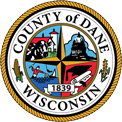
Our Oldest Oaks as a Living Heritage: A Quarter Century Update
By: R. Bruce Allison, Dane County Tree Board Member
In 1976, as part of the state celebration of the American Revolution Bicentennial, a survey was conducted to locate oaks within an eight mile radius of the state capitol that were at least 200 years old. Walter Scott, former assistant to the secretary of the State Department of Natural Resources, conducted the survey. Walter was very familiar with heritage trees, having maintained the records of big trees in the state since 1941.
I came to Walter in 1978 for help while researching two books I authored, Wisconsin's Champion Trees (Wisconsin Books, 1980) and Wisconsin's Famous and Historic Trees (Wisconsin Books, 1982). At that time he gave me a copy of the newspaper article describing his Bicentennial Survey and the list of 443 oaks that qualified (The Capital Times, August 11, 1976). Using annual growth ring studies of local oaks, he determined that Bicentennial white or bur oaks needed a trunk circumference measured at 4.5 feet above ground level of at least 10 feet, and pin, black, and red oaks needed a trunk circumference of 11 feet. Walter died in 1983. I kept his list of Bicentennial trees and now, in 2001, a quarter of a century later, revisited those venerable old oaks to determine which were still with us. This time I used new technology, the satellite-based Global Positioning System and the Dane County Geographic Information System, including high resolution map-like aerial photography, to give each tree a permanent longitude and latitude address. This will make it easier for future heritage tree surveyors to locate these links to our past. Hopefully such surveys as this will also encourage appreciation and good stewardship of these and other living heritage trees.
The list of trees includes Walter's original address and identification number (B meaning bur, W meaning white and P meaning in the pin-black-red family and the number following represents ranking by size within those three categories). The trunk circumference in 1976 is listed first, followed by my new measurement. ANF means address not found, TNF means tree not found and 'gone' means I am confident it is dead. The last two columns are the latitude and longitude location. You can view the list of trees by clicking the link below.
Many people helped me on this project. I especially wish to thank Diane Danielsen and Fred Iausly of the Dane County Land Information Office; Tom Krull, chairman of the Dane County Tree Board; William Kramer and Michael Weston for field assistance; Kathleen McCormick, Marek Dudka and James Gage for technical assistance and Katie Maloney for web page creation.